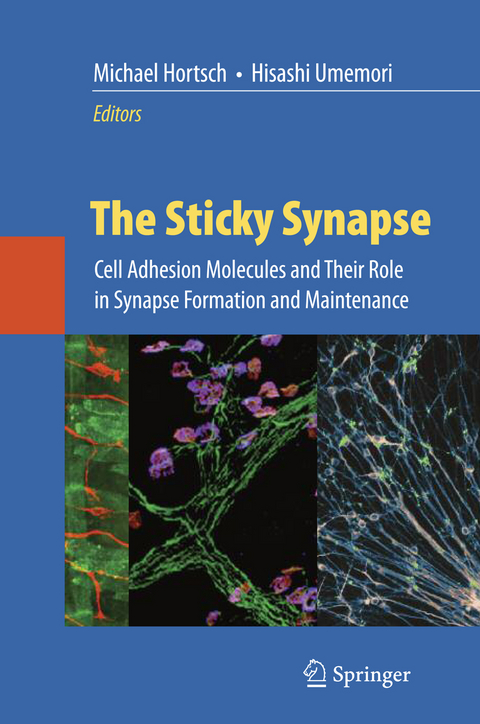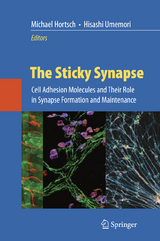The Sticky Synapse
Springer-Verlag New York Inc.
978-0-387-92707-7 (ISBN)
Dr. Michael Hortsch holds a Diploma degree in Biochemistry from the Free University Berlin and a Ph.D. in Biology from the University of Heidelberg in Germany. While working at the Weizmann Institute in Israel, the European Molecular Biology Laboratory in Heidelberg, and at the University of California at Berkeley he has published on topics such as the mechanism of growth factor receptor activation, the transport of proteins across membranes, and the physiological roles of neuronal cell adhesion molecules during nervous system development. He has been a faculty member of the Department of Cell and Developmental Biology at the University of Michigan in Ann Arbor since 1991. Dr. Hortsch has served on scientific review panels for the National Institutes of Health, the National Science Foundation, and other agencies. Dr. Hisashi Umemori is a faculty member of the Molecular and Behavioral Neuroscience Institute and of the Department of Biological Chemistry at the University of Michigan Medical School. He worked with Dr. Tadashi Yamamoto at the Institute of Medical Sciences of the University of Tokyo and analyzed intracellular signaling mechanisms that are involved in myelination and in learning and memory. While working with Dr. Joshua R. Sanes at Washington University Medical School and at Harvard University, he identified synaptic organizing molecules that promote synapse formation during nervous system development. Dr. Umemori has received various awards, including a Basil O'Connor Award and a Klingenstein Fellowship Award.
A Short History of the Synapse – Golgi Versus Ramón y Cajal.- Cell Adhesion Molecules at the Drosophila Neuromuscular Junction.- Development of the Vertebrate Neuromuscular Junction.- Synapse Formation in the Mammalian Central Nervous System.- Developmental Axonal Pruning and Synaptic Plasticity.- Cell Adhesion Molecules in Synaptopathies.- The Cadherin Superfamily in Synapse Formation and Function.- Nectins and Nectin-Like Molecules in the Nervous System.- The Down Syndrome Cell Adhesion Molecule.- Molecular Basis of Lamina-Specific Synaptic Connections in the Retina: Sidekick Immunoglobulin Superfamily Molecules.- SYG/Nephrin/IrreC Family of Adhesion Proteins Mediate Asymmetric Cell–Cell Adhesion in Development.- L1-Type Cell Adhesion Molecules: Distinct Roles in Synaptic Targeting, Organization, and Function.- Cell Adhesion Molecules of the NCAM Family and Their Roles at Synapses.- MHC Class I Function at the Neuronal Synapse.- Pathfinding Molecules Branch Out: Semaphorin Family Members Regulate Synapse Development.- Ephrins and Eph Receptor Tyrosine Kinases in Synapse Formation.- Neurexins and Neuroligins: A Synaptic Code for Neuronal Wiring That Is Implicated in Autism.- Synaptic Adhesion-Like Molecules (SALMs).- The Role of Integrins at Synapses.- Extracellular Matrix Molecules in Neuromuscular Junctions and Central Nervous System Synapses.- Gap Junctions as Electrical Synapses.
| Erscheint lt. Verlag | 8.7.2009 |
|---|---|
| Zusatzinfo | XII, 453 p. |
| Verlagsort | New York, NY |
| Sprache | englisch |
| Maße | 155 x 235 mm |
| Gewicht | 949 g |
| Themenwelt | Medizin / Pharmazie ► Studium |
| Naturwissenschaften ► Biologie ► Humanbiologie | |
| Naturwissenschaften ► Biologie ► Zoologie | |
| ISBN-10 | 0-387-92707-7 / 0387927077 |
| ISBN-13 | 978-0-387-92707-7 / 9780387927077 |
| Zustand | Neuware |
| Haben Sie eine Frage zum Produkt? |
aus dem Bereich




